The advantages of automatic hatching egg collection
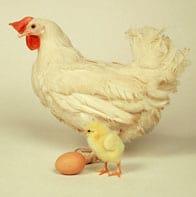
Optimising house conditions
- Lay-out of the house; The position of nest boxes, slats, drinking and feeding lines, lights, etc. will directly affect bird activity within the house and their distribution within the house. An even distribution of birds will optimise nest box use resulting in reduced numbers of floor eggs. Also there will be reduced possibility of nest box crowding which is associated with dirty, cracked and broken eggs.
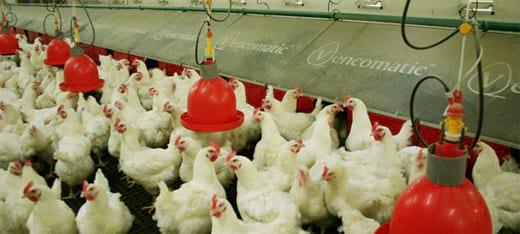
A good house layout is the starting point of an optimised environment
- Climate in the house; It is important to maintain a good temperature and humidity in the house in order to keep the birds healthy and the litter in a good condition to lower the ammonia level and create a good mating area.
- Feed quantity and quality; The quantity and quality of feed has a direct impact on the quality of hatching eggs. Recommended feeding regimes and feed specifications as advised by the breeding company should be strictly adhered to. Failure to do so will result reduced fertility, embryo viability and thus reduced hatchability and chick numbers.
- Flock management; Management will to some extent be dependent on the type of bird and house conditions. However, most important for the quality of hatching eggs is frequent collection of eggs, the schedule of feeding-times and restriction of water.

With a good flock management mating is stimulated
The route from hen to incubator
- Egg hygiene; Contamination of hatching eggs with micro organisms may result in reduce hatchability because of rots and bangers and can lead to poor chick quality. Therefore hygiene in during egg packing, handling and transport is of utmost importance.
- Cracked eggs; If hatching eggs are not handled gently from the bird to the hatchery, hair cracks will lead to lower hatchability.
- Temperature and humidity; Variations in temperature and humidity during transport and storage will have a negative effect on embryonic growth.
- Selection of the eggs; Eggs should be selected for shape, shell quality and colour. In addition selection on the basis of uniform egg weight and size is important and will reduce the chances of breakages.
- Incorrect storing position; Eggs must be stored point down before and during incubation in order to maximise hatchability.
- Transport trucks; Egg collection vehicles should be designed to prevent shocking of hatching eggs during transit to the hatchery to reduce incidence of hair cracks which will reduce hatchability.
Automation in hatching egg collection
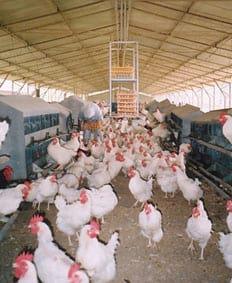
Manual collection of hatching eggs
Comfortable and clean nest boxes
To prevent birds littering the nest box at night it is advisable to chose a nest with a closing mechanism. A time clock can be used for automatic closing and opening of the nest box. Tipping floors are the best closing mechanism as this also assures a clean nest floor in the morning. Dirt and dust will fall of easily when closing the nest. At the same time dead birds will be tipped out of the nest.

Another advantage of rollaway nest boxes is that eggs roll away to an egg belt where temperature is uniform. In manual collected nest boxes the temperature will vary as different birds will sit on the egg after it is has been laid. The egg belt should have an open structure in order to create a steady temperature at egg level. Egg belts made of woven material still cause temperature increase if large numbers of eggs are on the belt.
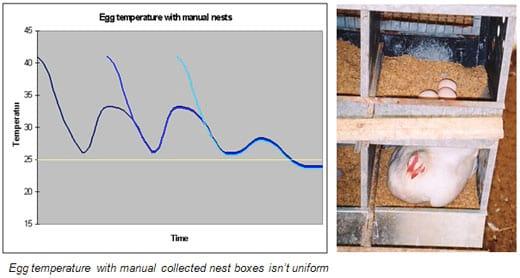
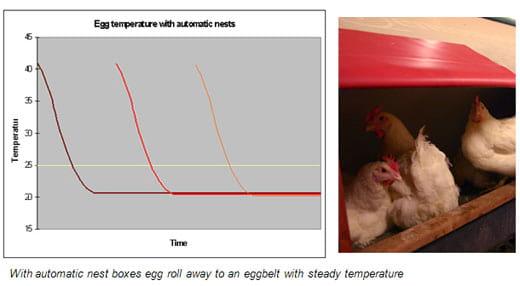
Gentle egg handling and transport
Egg packing, storage and transport

Finding a partner in automation
Definitely a very informative article about handling of hatching eggs and congratulations to author for that. However I feel that for automatic egg collection breeder houses are to be initially designed for this activity as retro fitting will be cumbersome and difficult.
yes! Interesting article about handling of hatching eggs.
As stated by the author,automation will definitely help to improve the hatchability and infection free eggs.Though the initial cost of automation will be more, returns will be much more compared to manual handeling.Moreover recurring expenses will be less.
Good article about handling of hatching eggs. As stated by the author,automation will definitely help to improve the hatchability and infection free eggs.Though the initial cost of automation will be more, returns will be much more compared to manual handeling.Moreover recurring expenses will be less.
Hatchability has always been a matter of concern for the breeding farm and hatchery managers it is always desired by the day old chicks producers to get maximum number of chicks in a hatch,however in addition to many factors affecting the hatchability as the author describes handling of hatching eggs is of utmost importance to get maximum hatchability.The cost of automation should not be a problem for a breeding farmer rather quality and quantity of hatching eggs. A very good and informative article.
Dr.Saadat Ali Changezi
D.V.M












.jpg&w=3840&q=75)